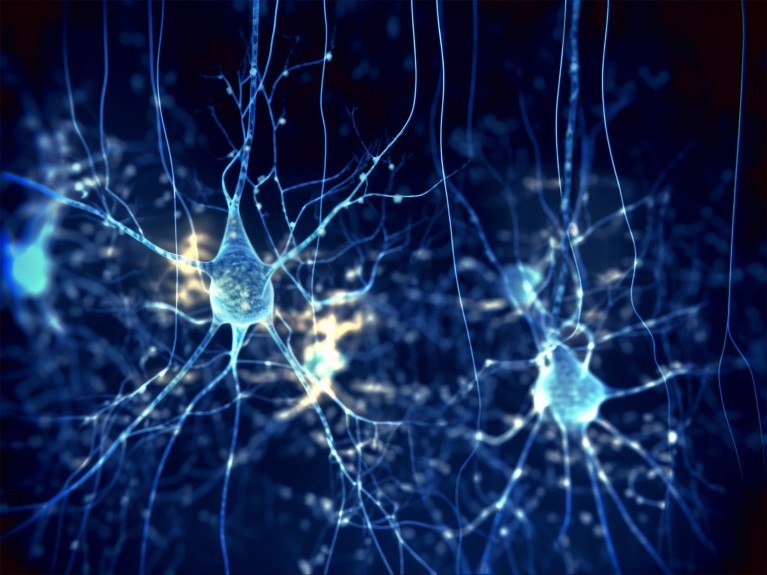Hello Nature readers, would you like to get this Briefing in your inbox free every day? Sign up here.

Communication between neurons (illustration) in two separate brain regions is patchy in mice that are susceptible to severe stress. Credit: Juan Gaertner/Science Photo Library
Joylessness induced by stress leaves a distinct signature in the brains of mice. Researchers found that communication is disrupted between two regions of the brains of mice susceptible to anhedonia, a resistance to enjoyment and pleasure. Injecting the rodents with compounds that caused neurons in the target areas to fire more frequently made their brain activity more similar to that of ‘resilient’ mice, and made them more likely to seek rewards. If these findings are validated in humans, they provide a new avenue for treating anhedonia, which is common in people with depression.
Features & opinion
You just received another job alert, and for once, this one ticks all the boxes. But all of your past applications have fallen into a black hole — how can you succeed this time? A Nature survey of 1,100 hiring managers reveals the key steps, which include studying the job description, customizing your CV and writing a short, personal cover letter. Preparing thoroughly for interviews and being a good listener will also boost your chances. “People like to hire people that they like and feel a connection to,” says talent-acquisition manager Jim Harrington.
A focus on climate ‘tipping points’ — moments of abrupt and irreversible shifts in the Earth system, such as the loss of the Amazon rainforest — isn’t helpful, argues an interdisciplinary group of ten researchers that includes climate scientists, science communicators and environmental sociologists. The issues involved are important to study, but the framing is too abstract and frightening to trigger useful action, and not rigorous enough to inform policy, they argue. They recommend that scientists avoid using the idea as a scholarly tool and instead consider it “a fuzzy, boundary-spanning concept akin to ‘sustainability’”.
Nature Climate Change | 27 min read
Doggerland — an area between the United Kingdom and mainland Europe that is now beneath the North Sea — was once home to thriving human communities, suggests landscape archaeologist Vincent Gaffney, who has studied the lost region for more than 15 years. Using seismic survey data to re-create its topography and ecological complexity in detailed 3D maps, his work disputes the dominant theory that it was merely a land bridge used as a trade route.
Image of the week

A ray spider (Theridiosoma gemmosum) catapults its web to ensnare a mosquito dangled by researchers. These spiders pull webs into cones loaded with elastic energy by tethering them to a nearby object. When auditory cues indicate that prey is near, the spiders release the web, which snaps forward to trap the unlucky individual. (Science | 3 min read) Reference: Journal of Experimental Biology paper (Sarah I. Han et al./J Exp Biol (CC BY 4.0))
Today I’m trying to avoid endlessly scrolling on social media to watch poor-quality content, otherwise known as ‘brain rot’, the Oxford Word of the Year 2024. Luckily, I have a whole host of science news to read instead (a Briefing editor’s work is never done!)
Let us know how to improve the quality of our content at briefing@nature.com.
Thanks for reading,
Jacob Smith, associate editor, Nature Briefing
With contributions by Flora Graham and Gemma Conroy
Want more? Sign up to our other free Nature Briefing newsletters:
• Nature Briefing: Careers — insights, advice and award-winning journalism to help you optimize your working life
• Nature Briefing: Microbiology — the most abundant living entities on our planet — microorganisms — and the role they play in health, the environment and food systems
• Nature Briefing: Anthropocene — climate change, biodiversity, sustainability and geoengineering
• Nature Briefing: AI & Robotics — 100% written by humans, of course
• Nature Briefing: Cancer — a weekly newsletter written with cancer researchers in mind
• Nature Briefing: Translational Research — covers biotechnology, drug discovery and pharma
